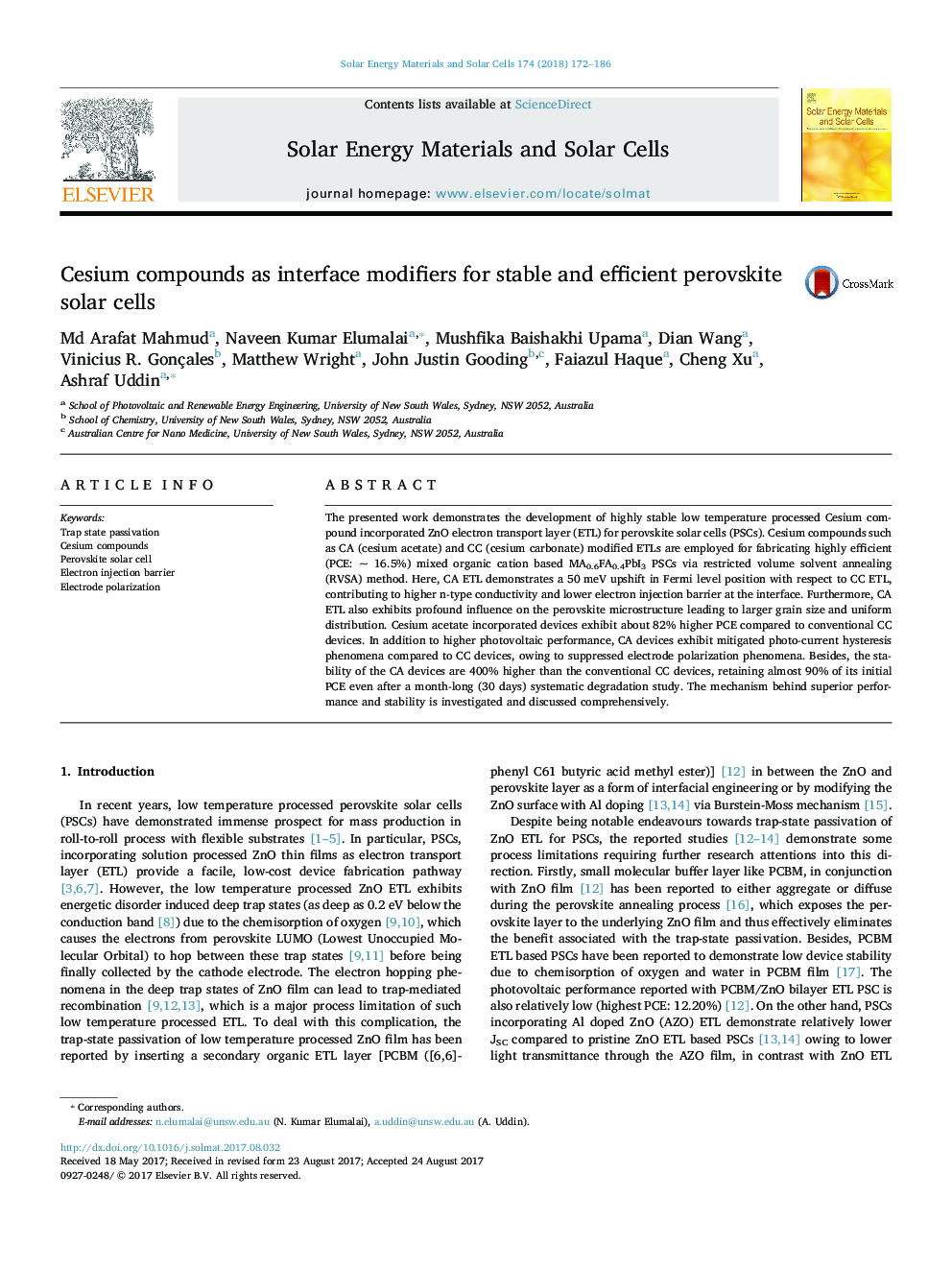| Article ID | Journal | Published Year | Pages | File Type |
|---|---|---|---|---|
| 6456643 | Solar Energy Materials and Solar Cells | 2018 | 15 Pages |
â¢Interface engineering of ZnO ETL with Cesium compounds for perovskite solar cells (PSC).â¢ZnO ETL was modified with cesium acetate (CA) and cesium carbonate (CC) compound.â¢CA ETL exhibits higher conductivity and lower electron injection barrier than CC ETL.â¢CA devices exhibit 82% higher PCE and lower hysteresis than CC devices.â¢CA devices demonstrate four times higher device stability than CC devices.
The presented work demonstrates the development of highly stable low temperature processed Cesium compound incorporated ZnO electron transport layer (ETL) for perovskite solar cells (PSCs). Cesium compounds such as CA (cesium acetate) and CC (cesium carbonate) modified ETLs are employed for fabricating highly efficient (PCE: ~ 16.5%) mixed organic cation based MA0.6FA0.4PbI3 PSCs via restricted volume solvent annealing (RVSA) method. Here, CA ETL demonstrates a 50Â meV upshift in Fermi level position with respect to CC ETL, contributing to higher n-type conductivity and lower electron injection barrier at the interface. Furthermore, CA ETL also exhibits profound influence on the perovskite microstructure leading to larger grain size and uniform distribution. Cesium acetate incorporated devices exhibit about 82% higher PCE compared to conventional CC devices. In addition to higher photovoltaic performance, CA devices exhibit mitigated photo-current hysteresis phenomena compared to CC devices, owing to suppressed electrode polarization phenomena. Besides, the stability of the CA devices are 400% higher than the conventional CC devices, retaining almost 90% of its initial PCE even after a month-long (30 days) systematic degradation study. The mechanism behind superior performance and stability is investigated and discussed comprehensively.
